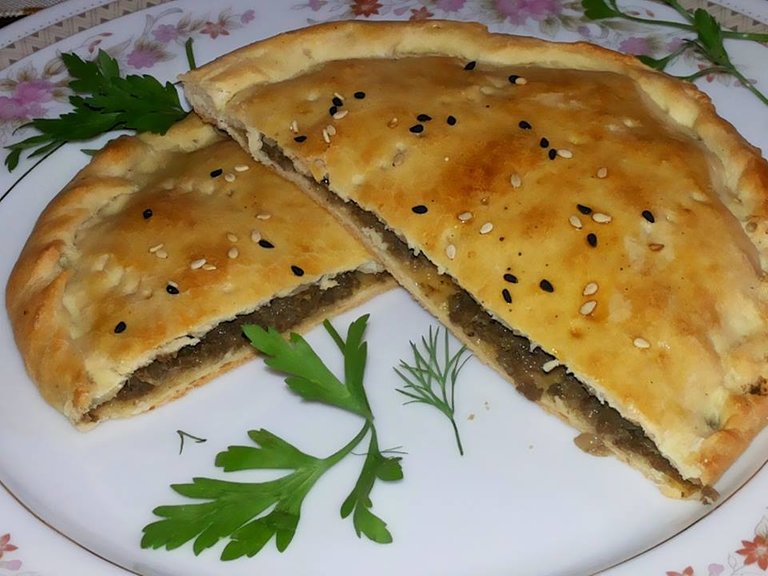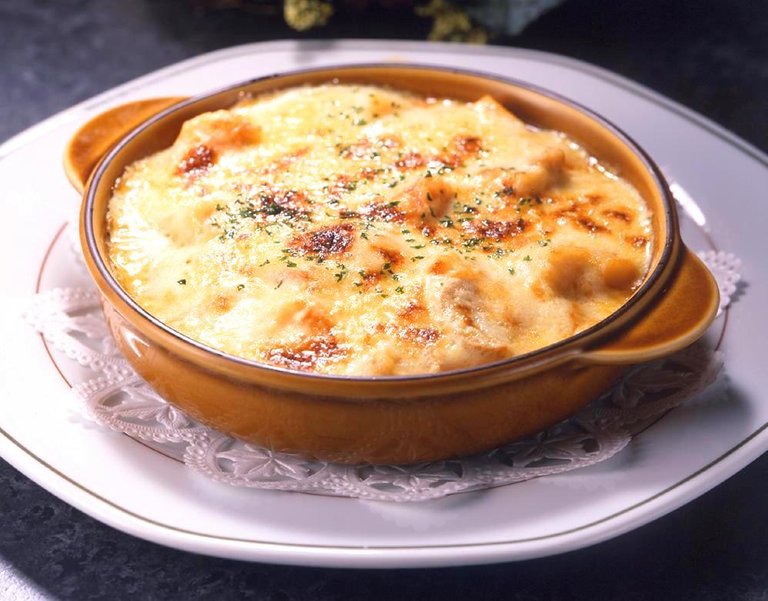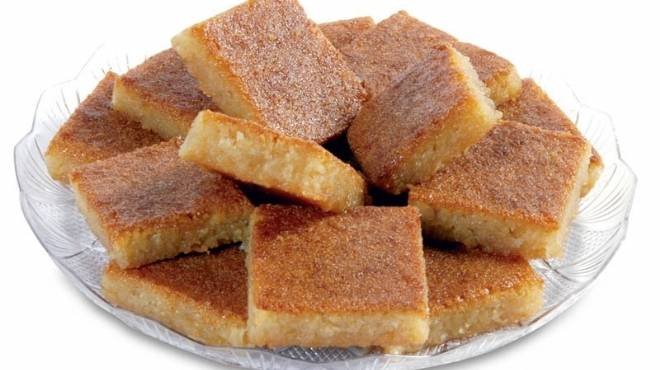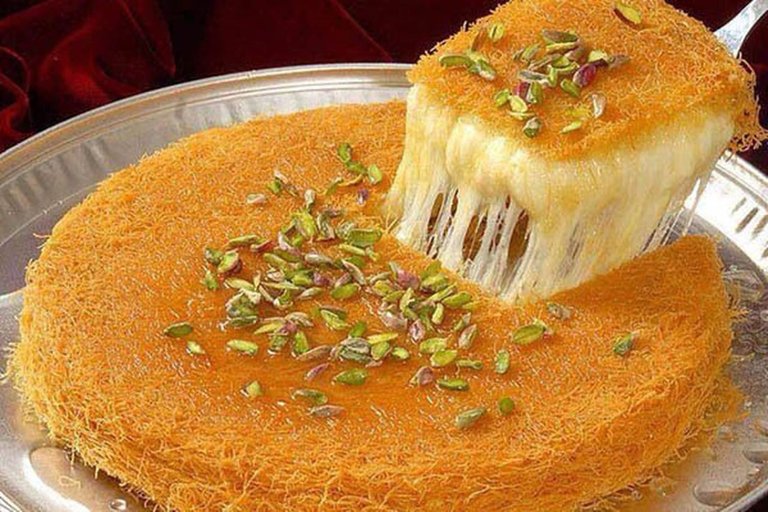- Al-Mascaha

Is a dish consisting mainly of eggplant or potatoes with onions, often contain minced meat in the Ottoman kitchen, which is spread in the Middle East and Europe, is said to be Egyptian origin and some say it is
Shamia and there is a difference in origin and the correct origin of Greek or Turkish and then moved to the East Middle in the late nineteenth century.
Ingredients
2medium size eggplant
2green peppers, sweet slices
1hot green pepper, sliced
4cloves of crushed garlic
4tbsp tomato paste
2Salt and black pepp
1cup oil 2\1
- Hawashi

Al Hushi is a popular Egyptian dish. It is minced meat and seasoned with onion, pepper, spices, nutmeg, parsley. Add some chili and chili and are placed between two layers of white dough and enter the oven to produce a special and delicious aroma.
Ingredients: Bread (Shami or my "wheat"). Half a kilo of minced meat. Onion, fruit. Corn oil, butter or margarine. Salt Pepper. Spices (cinnamon and nutmeg). Coriander Green, Laura Leaf, Crispy Beans. The fruit of green pepper. Tomato cubes. Paper foil (tin foil).
Hawashi is an easy-to-prepare and easy-to-cook Egyptian dish because its innovator was a student at Al-Azhar University in the village of Hawawish in southern Egypt in Sohag.
I really advise you to eat it.
- Um Ali

Um Ali Sweets consist mainly of specially made paste, milk and various nuts. For those who do not know the story of Umm Ali, the novel says that the name of the wife of the first Mamluk Sultan Izz al-Din Aibak, who married the trees of the Koran, and the Mamluks refused to take over a woman.
Made of specially made paste, milk and various nuts. Izz al-Din Aibak, who married the trees of the Koran, and the Mamluks refused to control a woman.
After her marriage she married her or Ali, who angered her and paid her for revenge, and even the behavior of Umm Ali from the tree of rank arranged to lead to her death and installed by her son Ibn Izziddin Aibak
Sultan of Mamluk. He ordered me to mix all the existing flour, sugar, nuts and others distributed to the people to celebrate and form words Meaning: I do it.
2.Basbousa

Or revani) is a traditional Eastern-Shami delicacy from the Middle Eastern and Egyptian cuisine, and is made from semolina mainly on most holidays and occasions. The methods of preparing and decorating the pesos are different. In the Egyptian Basbousa, rose water is added instead of vanilla, while some Gulf countries such as Bahrain and Yemen prefer to make the pasta with date filling, while in Saudi Arabia it is hot after it is cooked immediately. It is not as cold as in Egypt..
Has been associated with Albbasousa many of the holidays and events as the month of Ramadan Bbbsousa on breakfast and before the Suhoor and many Arab families are keen to provide or give it to each other.
Basboush is an Arabic word derived from the verb Basbak and the flour, ie, water, mixed with oil or oil or both.
Although it is not Egyptian origin, but Basbousa was able to become a staple of the Egyptians, and the origin of Albasbousa to the days of the Ottoman Empire, where the Ottoman Empire was famous for making sweets and transfer to different countries, and the reason for the name of the method of work, which depends only on "" Semolina with ghee is the easy way that made the Egyptians accept her work..
- Konafa

Konafa Nablus is made up of dough filaments, with ghee, sugar and nuts added to it. It is one of the most famous sweets in the Levant, especially in Palestine, where Konafa Nabulsi is famous. It is one of the most popular desserts in all seasons and seasons. It is especially prepared in Ramadan. It activates fasting after breakfast, and saves her energy and calories. Rich in large amounts of sugar and vitamins contain large amounts of proteins, iodine, iron and phosphorus. Konafas are also offered at all parties and events, such as weddings, events, success events and family gatherings.
1.Place the oven in a medium temperature and place it in a tray for 15 minutes in the oven or dry. Remove it from the oven and leave until cool.
Place half a small pinch of butter on it and place the chopped cheese on it. Place the 2.remaining quantity of cauliflower and place it in the oven.
3.The oven is heated for 20 minutes and then cooled and cooled.
The Egyptian can not leave the konafah because it is an integral part of the Egyptian heritage and is made in the occasions and the holy month of Ramadan. This is usually one of the habits of Muslims. I think it is one of the best desserts. I advise you to try it.
This looks soo delicious and yummy....thanks for sharing